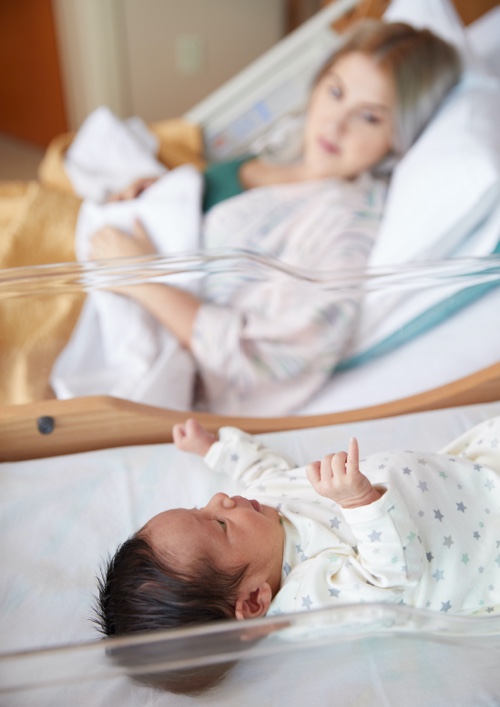Why Step 7?
Hospitals in the early part of the 20th century adopted the practice of nursery care for newborns resulting in increased morbidity and mortality among newborns due to cross-infection.1 Today, more hospitals have adopted rooming-in as standard care based on its many benefits including:
- increased recognition and response by parents to their infant’s feeding needs
- early establishment of exclusive and continuous breastfeeding
- cost savings and a reduction in hospital-related infection.2
Rooming-in should be offered to all mothers, regardless of their infant feeding method. To ensure safety, staff should perform routine checks on mother-baby pairs during the entire facility stay and work to reduce any medical contributing factors to maternal fatigue, where applicable. Staff should also provide education to parents on safe sleep and SIDS risk reduction for their newborn. Safe sleep and SIDS risk reduction are critical while in the birthing facility and once newborn is discharged home.
Separation of mothers and infants should occur no more than one hour a day to allow for any procedures that cannot be conducted at the bedside for justifiable medical and safety reasons. If separation occurs based on medical need or mother’s informed request, efforts must be made for the mother to have no restrictions for visiting her infant and she must have adequate space to express milk adjacent to her infant. Maternal requests for nursery care should be explored in a sensitive conversation to learn more about her request and to help her understand the importance of rooming-in.

Primary Goals of Step 7
- Provide rooming-in as standard care for healthy mother-baby dyad.
- Document informed choice when maternal request is made for nursery care.
- Limit separation of mother-baby dyad to no more than one hour a day and conduct procedures at the bedside, when possible.
- If separation is warranted, provide adequate space and time for mother to feed or express milk for her baby.
- Provide education for parents on safe sleep practices and SIDS risk reduction for baby.
Ten Step Self-Assessment
Use the Ten Step Self-Assessment to help you evaluate your progress for this step. This self- assessment document does not have to be submitted with application.

New Applicants
- Use document checklist (PDF) to ensure appropriate support documentation is included with application.
- If your current practice does not meet these criteria, review the Ten Step Self-Assessment to assess how your facility might fully implement this step.

Re-Designation Applicants
- Review your individual Ten Step Scorecard from the last designation for change recommendations.
- Use the Ten Step Self-Assessment Tool to help plan for step-by-step improvement in any areas needed.
- Review the Baby Friendly USA, Inc. Guidelines and Evaluation Criteria to view full standard for this step.
Resources
-
Family is Resting Sign (PDF)
This sign can be used in the birthing facility to alert visitors of a family’s rest time or do not disturb notice.
-
Texas WIC Video: How to Room-in with Baby (English)
Video Blog from the Texas WIC program called “How to Room-in with Baby” to share with parents.
-
Texas WIC Video: How to Room-in with Baby (Spanish)
Video Blog from the Texas WIC program called "Rooming-in con su bebé" (“How to Room-in with Baby”) to share with parents.
-
SAFE TO SLEEP®
Information and resources about safe sleep for infants from the Texas Department of State Health Services.
-
Sleep and Night Time Resources
Resources for parents and professionals from Unicef U.K.
-
Texas WIC: Making the Right Amount of Milk (PDF)
Information to share with parents on principles of breastmilk supply.
References
- Academy of Breastfeeding Medicine (ABM) Protocol #6: Bedsharing and Breastfeeding (PDF)
- Feldman-Winter L, Goldsmith JP. Task force on sudden infant death syndrome, Committee on Fetus and Newborn. Safe sleep and skin-to-skin care in the neonatal period for healthy term newborns. Pediatrics. 2016;138:e20161889
- Rooming-in for new mother and infant versus separate care for increasing the duration of breastfeeding. Cochrane Database Syst Rev. 2016;(8):CD006641. doi:10.1002/14651858.CD006641.pub3.



